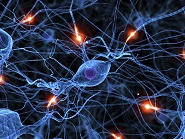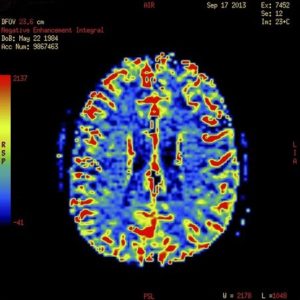
Neural Networks and Myelination
I’ve always pondered why personality can seem so fixed and relatively immutable, even when the individual seems committed to change themselves. As with many things I’ve studied about people over time, a strong neurological aspect appears underpin the highly stable personality/psychological constructs.
After reading Daniel Coyle’s book, “The Talent Code,” years ago, I see another possible good explanation. The key aspects of his work relevant to us:
- There are two factors that influence brain performance when myelination is strong. First, the nerves transmit much faster, up to 100 times as fast. Secondly, late arriving signals in the brain, those that didn’t take the faster myelin routes, are generally ignored when they do complete, if a substantial number of the faster myelination paths have already fired.
- The effect is that highly learned pathways become super-highways of the brain. The local streets, where you walk around at one one-hundredth the speed, are essentially ignored whenever you activate the super-highways. Once built, the super-highway owns much of your thought and behavior. That may be what you want for golf or violin, where there isn’t time to be consciously choosing each motion, but not so much for your personality.
I’ll now give you my synthesis on what this means to us in our core personality and being.
As we develop and go through life, our high level psychological rewards become part of the learning, success, and other feedback mechanisms. We create and then refine self-concepts that become the goal of our brain’s learning. As we operate in our daily life, when situations and patterns are very similar to these self-concepts, the brain treats it as though we are practicing at being our ‘perfect self,’ and rapidly myelenates the pathways involved. In effect, the brain builds super-highways for our basic personality and way of being. At particularly intense, focused, or emotional moments, the brain may even experience inadvertent ‘deep practice’ rapidly myelinating pathways — pathways that you might specifically not want engrained into your personality.
 This myelenation likely becomes what I call the ‘learned self,’ as opposed to your consciously desired self. We build the super-highway inadvertently, without awareness we are doing so, starting early in life, and then gradually develop a more consciously chosen self-concept.
This myelenation likely becomes what I call the ‘learned self,’ as opposed to your consciously desired self. We build the super-highway inadvertently, without awareness we are doing so, starting early in life, and then gradually develop a more consciously chosen self-concept.
The gap between being a learned self and seeking to become a consciously directed self is part of a process I sometimes call ‘awakening.’ And so begins the personal growth process of trying to replace some of the super-highways we’ve built. The good news is, with all the techniques and tools derived from modern understanding, this process is much cleaner, simpler, and faster than ever before.
As you try to be a greater individual, adding more conscious interjection into your daily life, building new or rerouted highways isn’t the hard part. When you act deliberately and consciously in accordance with your chosen, refined, self concepts, the myelination happens automatically. Obviously, you want as many elements of deep practice as possible to speed the process.
In relaxed situations, you have plenty of time to get off the highway, think things through, and take the path of your choice. In more intense or reactive situations, your brain is designed to use only the highways, operating faster than conscious controls, generating decisions, actions, and behavior that were programmed through thousands of hours of being yourself. Executing that status-quo self may then actually further reinforce the exaggeration of the ‘learned self’.
As you can see, in your growth process, staying off the existing highways while you develop new pathways is a big challenge. You’ve built an efficient, automatic operations network that is just plain easy to use. You hop on the highways of mind, check out consciously for a few minutes or hours, and life goes on. Real change requires long-term commitment, tools, and a widespread mindfulness-like practice.
Two key aspects of breaking this cycle are covered in many of my other posts:
- Learning to stay relaxed enough to exit the highway when it matters
- Form thoughtful, choice driven, self-concepts going forward
With this in mind, you enable self growth by deep practicing being your new self. A variety of tools and techniques help, along with a great deal of commitment, help shed emotional baggage, ramp down intensity, dissolve habitual fight-or-flight reactions.
As you can see, the interplay of neurology, psychology, and personality is a rich and fascinating dance. Our collective understanding of the self, brain, mind, and soul is at a point where we can push into new levels of human experience and excellence.
